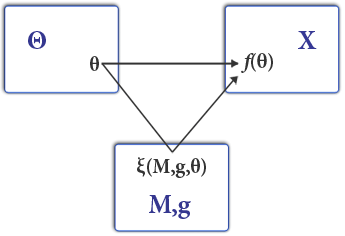This article includes a list of references, related reading, or external links, but its sources remain unclear because it lacks inline citations. (July 2024) |
| Part of a series on |
| Economics |
|---|
 |

Mechanism design, sometimes called implementation theory or institution design,[1] is a branch of economics, social choice, and game theory that deals with designing game forms (or mechanisms) to implement a given social choice function. Because it starts with the end of the game (an optimal result) and then works backwards to find a game that implements it, it is sometimes described as reverse game theory.[2]
Mechanism design has broad applications, including traditional domains of economics such as market design, but also political science (through voting theory) and even networked systems (such as in inter-domain routing).[2]
Mechanism design studies solution concepts for a class of private-information games. Leonid Hurwicz explains that "in a design problem, the goal function is the main given, while the mechanism is the unknown. Therefore, the design problem is the inverse of traditional economic theory, which is typically devoted to the analysis of the performance of a given mechanism."[3]
The 2007 Nobel Memorial Prize in Economic Sciences was awarded to Leonid Hurwicz, Eric Maskin, and Roger Myerson "for having laid the foundations of mechanism design theory."[4] The related works of William Vickrey that established the field earned him the 1996 Nobel prize.
- ^ "Journal of Mechanism and Institution Design". www.mechanism-design.org. Retrieved 2024-07-01.
- ^ a b Penna, Paolo; Ventre, Carmine (July 2014). "Optimal collusion-resistant mechanisms with verification". Games and Economic Behavior. 86: 491–509. doi:10.1016/j.geb.2012.09.002. ISSN 0899-8256.
- ^ L. Hurwicz & S. Reiter (2006), Designing Economic Mechanisms, p. 30
- ^ "The Sveriges Riksbank Prize in Economic Sciences in Memory of Alfred Nobel 2007" (Press release). Nobel Foundation. October 15, 2007. Retrieved 2008-08-15.




